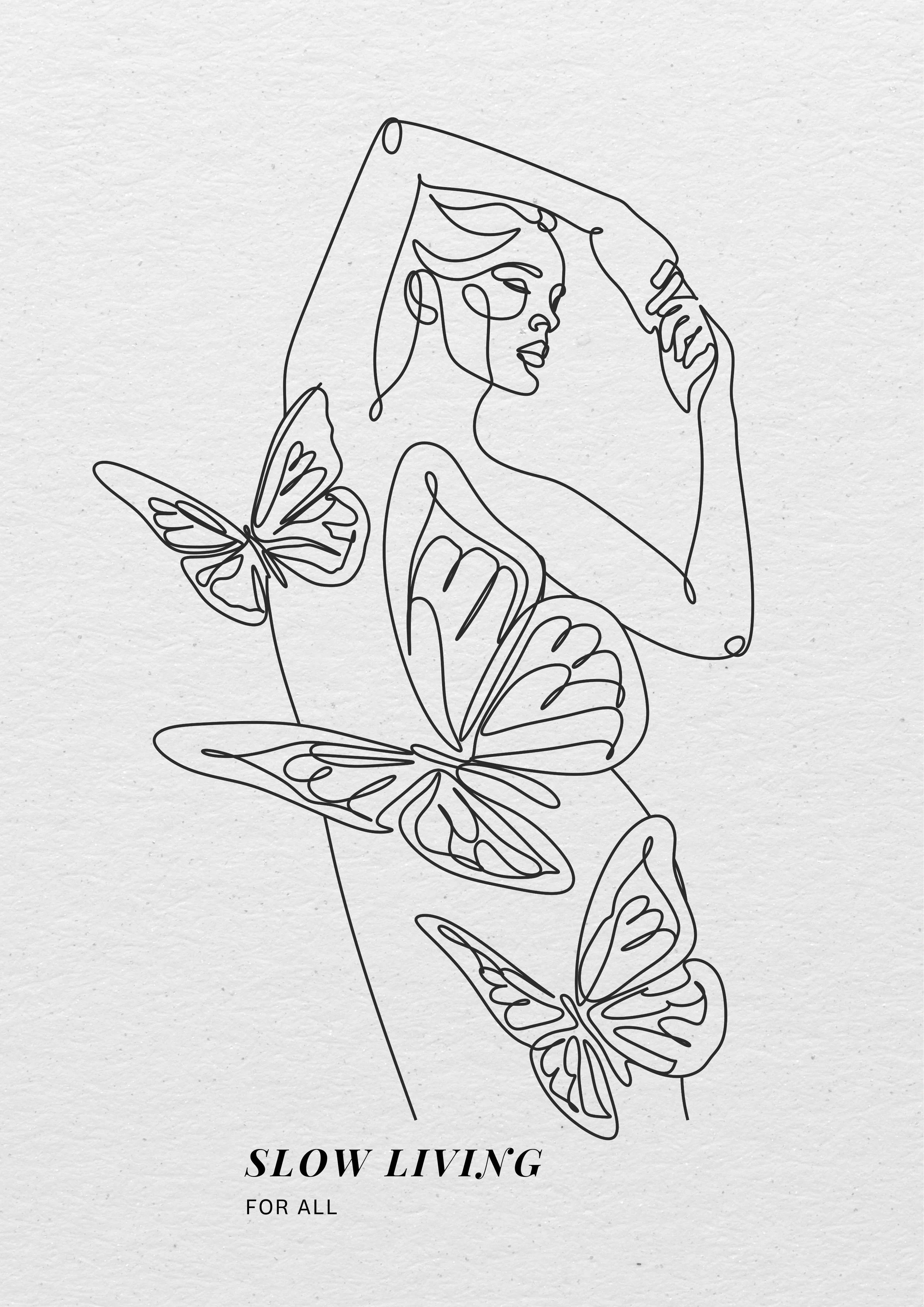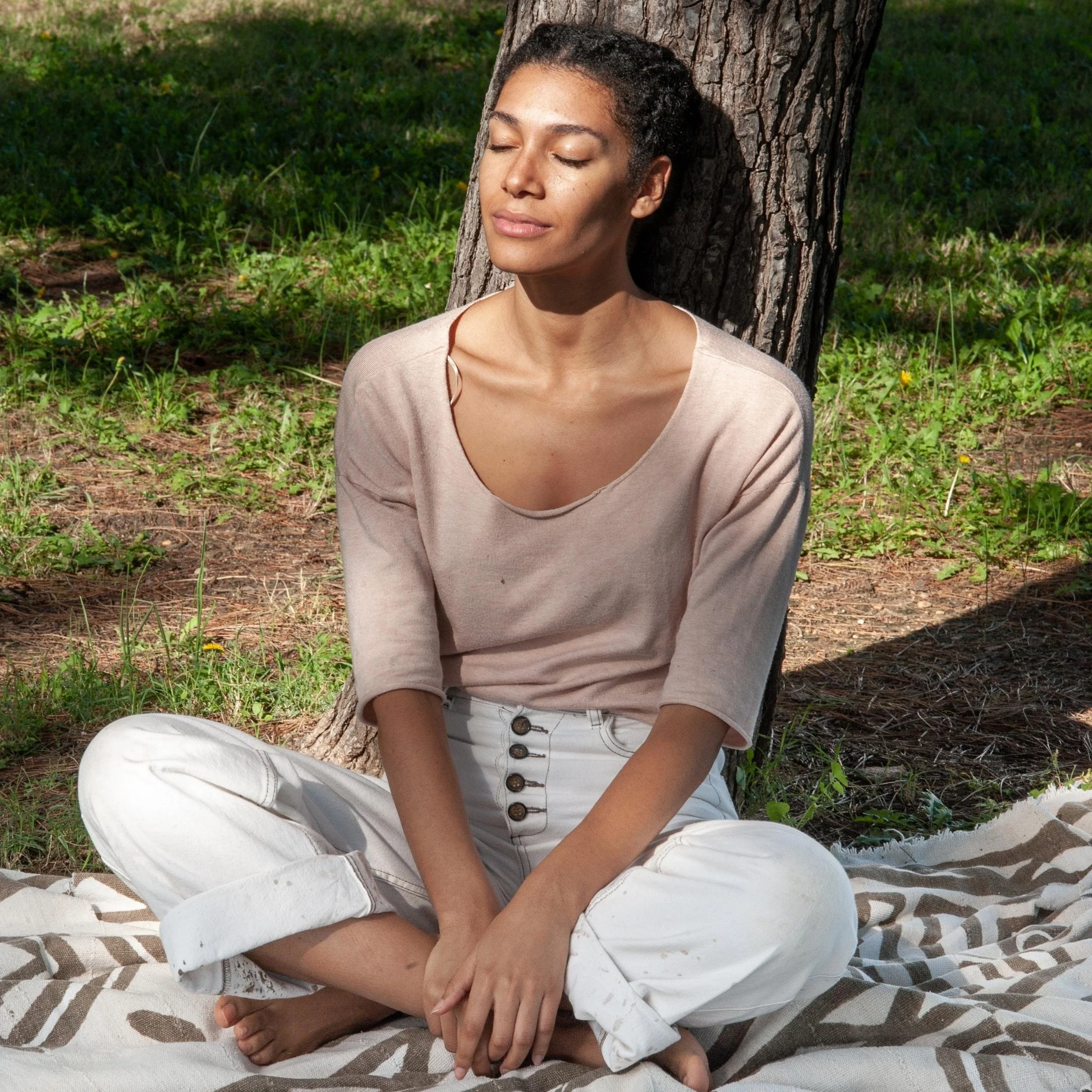Decolonizing “Slow Living”
written by Teyah Nichole
SHARE ON:
Meditation, yoga, and crystals are slow living staples that many are familiar with and regularly indulge in. However, what is not as regular is recognizing that these ancient practices have rich yet complicated legacies in how they were introduced into modern Western culture.
Recognizing these histories and legacies means acknowledging the inequitable ways in which slow living has become ostracized from the communities by which the concept and many associated practices were inspired.
As a way to fix this, some have attempted to “decolonize” the wellness space by asking the essential questions:
Who participates and benefits from slow living?
How do the current norms of the slow living cause harm to marginalized people?
How can we make slow living more accessible?
Decentering whiteness in the sustainability, lifestyle and wellness spaces is a fundamental ethos guiding everything we do here at W&S. Read more about how we approach slow living and why doing so is an essential step in making the world a safer, more equitable place!
What Is Slow Living?
Slow living is a broad concept encouraging people to consume less and take a slower, more mindful approach to their everyday lives. Slow living teaches people to strive for a simpler, sustainable, meaningful life. At first glance, this is a beautiful idea. Many slow living advocates often focus on important parts of our lives we often neglect, such as respecting your need for rest and relaxation.
The Nap Ministry, for example, is an organization that examines the liberating power of naps. It was founded by Tricia Heresy in 2016. It contributes to the slow living movement by reframing rest as a powerful tool of resistance to the exploitation of everyday people that capitalism requires to grow. Their work focuses on creating sacred spaces of community by harnessing the power of performative art and site-specific installations where sleep-deprived black and brown people may come together.
There are also contributions from brands such as Silk & Sonder, a self-care brand founded by ex-software engineer Meha Agrawal. Along with selling excellent wellness products such as candles and bath bombs, they offer a subscription-based wellness experience. Daily journaling exercises tailored to your personal needs, virtual classes and workshops, and an exclusive app help members employ slow living in their everyday lives.
Slow living can also be applied to specific parts of our lives, such as eating, as touched upon in our conscious nutrition and wellness post. Movements like the Sistah Vegan Project heavily focus on this in their approach to slow living. Founded by Dr A. Breeze Harper, this project aims to refine how we understand systems of oppression within the context of vegan food distribution and access in the US.
By emphasizing pathways to veganism in the US which are more ethical to marginalized communities, the Sistah Vegan Project promotes a slow, mindful eating ethos that’s inherently inclusive. As you can see, slow living has the potential to help people curate impactful lifestyles for themselves and those around them.
Where Does the Concept of Slow Living Originate?
Wellness, sustainability, and lifestyle brands everywhere have taken a deep interest in the slow living concept due to its rise and popularity and, therefore, profitability. However, very few brands have taken the time to explore where the idea comes from.
In fact, many are unaware that the exact phrase “slow living” is borrowed from the Italian “slow food” movement. Specifically, it came from Italian protests in 1989 to the proposed introduction of a Mcdonald’s at the Spanish Steps in Rome. Protesters successfully emphasized the importance of preserving sacred culture, traditional food systems, and overall Italian identity and sense of belonging over profit.
Therefore, the slow living concept, again born out of this movement, is at its core a reactionary, Western response to the challenges everyday people face living in late capitalism. Since 1986, modern life has only come under more scrutiny as its consequences have only become better understood.
As discussed in our burnout post, the World Health Organization has labeled work-induced mental exhaustion as an “occupational phenomenon”, only becoming more concerning within the context of the COVID-19 pandemic and recession. Increased isolation, workloads, financial stress, and lack of reliable support have made the possibility of a healthy work-life balance impossible for the average American.
There is also the matter of climate change. As seen in the impacts of and reaction to the 2021 South-Central Winter Storm and the Santa Clarita Fires, Americans are becoming increasingly aware of their environmental danger. What’s more, they are becoming more frustrated that their jobs and ways of life are entirely incompatible with a green economy model.
It is no surprise that the rise of slow living is happening in tandem with other radical reactions to the status quo. Everything from the global engagement with anti-racism, climate change, and anti-work movements are all, in many ways, practices of slow living. Slow, mindful living results in more people being aware, and therefore critical, of the systems surrounding them.
This fact highlights how the modern slow living movement shouldn’t be understood as simply born out of the Italian slow food movement. Instead, it is part of a larger response to the disgruntled, dissatisfied feeling people have with the current state of the world.
Why Slow Living Needs to Be Decolonized
The slow living concept has so much potential. However, it’s not without its limitations. The first is that slow living, as it’s promoted, just isn’t accessible to everyone.
The slow lifestyle of being mindful of everything around you, being intentional about what you choose to engage or not engage in, and taking a break from things that don’t bring you joy is something that a small portion of the population can do—class matters.
Not all women, especially the racialized women we create here at W&S, have the luxuries of living slowly. I am a privileged racialized woman myself, yet my identity comes with many strings attached in terms of how I need to show up in the world. I can’t always take the breaks I want or be as relaxed about how I go about the world because the world doesn’t always view me as a complete human being.
This is where slow living and conscious living differ as we understand it at W&S. Where slow living is an ethos that tends to begin and end with the self, conscious living is something that is deeply concerned about one’s relationship with community. Connectedness is emphasized, whether it be the fellow humans or the environmental community.
Although some slow living advocates understand the community element of slow living, most slow living discourse tends to be exclusionary to marginalized communities. This is because slow living is often used as a performative statement instead of a genuine approach to making the world better. Don’t believe me? I encourage you to search through the #slowliving content on Instagram. This is what you’ll find:
A lot of perfectly curated content about one’s personal life and space based on Eurocentric ideals of beauty and space. You would have to scroll for ages to find genuine, non-extractionary inclusion of non-white perspectives.
What’s more, many of these content creators allude to Eastern traditions within their discourses of slow living. Many slow living advocates suggest starting your day with yoga and meditation, making sound baths a regular part of your wellness routine, or trying acupuncture to help with anxiety.
As many of you know, all of these practices are rooted in non-white medicinal histories. The dominant voices in the slow living discourse are therefore seemingly comfortable engaging with non-white traditions but not as much with actual non-white people.
To be clear, this isn’t a drag on white people wanting to engage with the slow living lifestyle. Again, I genuinely think the slow living concept has great potential. However, there needs to be more engagement with recognizing the circumstances that make slow living necessary (i.e. people feeling overworked and overwhelmed) and who those circumstances impact the most.
Race and class are deeply intertwined in the US, and it becomes clear that slow living is most important for marginalized people operating within these intersections as people within these intersections face more threats to their well-being than other Americans who don’t. It becomes even more critical when slow living advocates want to borrow from their cultures.
How to Decolonize the Slow Living Discourse
1.
Understand that slow living is not a radically new concept.
Living intentionally is not a brand-new way of living. Intentional living, conscious living, slow living, etc., have all been around for centuries. It’s just been rebranded for the current chaos of the normal American lifestyle.
Native and non-Western cultures have advocated and practiced mindful living for a very long time. When adopting a slow living ethos, we need to give credit to these cultures and include their perspectives within the discourse.
2.
Acknowledge the roots of wellness practices routinely associated with slow living.
The slow living concept most of us are familiar with today is one that has been reinformed by modern capitalism and new age interpretations of sacred practices from ancient civilizations.
For slow living to be accessible, this fact has to be acknowledged. As often as you can, try and listen to people from and with vested interests in the communities in which the wellness practice you want to participate is from.
By doing you, you lower your risk of participating in exploitative behavior or misinterpretations of sacred traditions that might be harmful. Of course, not everyone can do this, but try to approach slow living this way as much as possible.
3.
Frame the need for slow living as a symptom, not a solution, to bigger problems.
Last, but not least, it’s essential to understand that slow living cannot be a way to avoid addressing larger structural problems. Spiritual bypassing and political avoidance are too common within the conscious living and slow living spaces.
Slow living is NOT an excuse to not be politically active. Slow living is a means for you to be able to show up more effectively to make change. If your version of slow living looks like you never engaging with important discussions and never showing up for those who need your support, you’re not living slow. You’re simply choosing to opt out of your role as a member of your larger community and that is not something we stand for here at W&S (ever)!
W&S Approved Slow Living Brands You Should Know About
Now that we’ve given you the rundown on slow living, here are a few of our favorite slow living movements and people you should check out. Our picks are BIPOC women owned and led, so you can rest assured your slow living content will be better tailored to your needs and interests!












